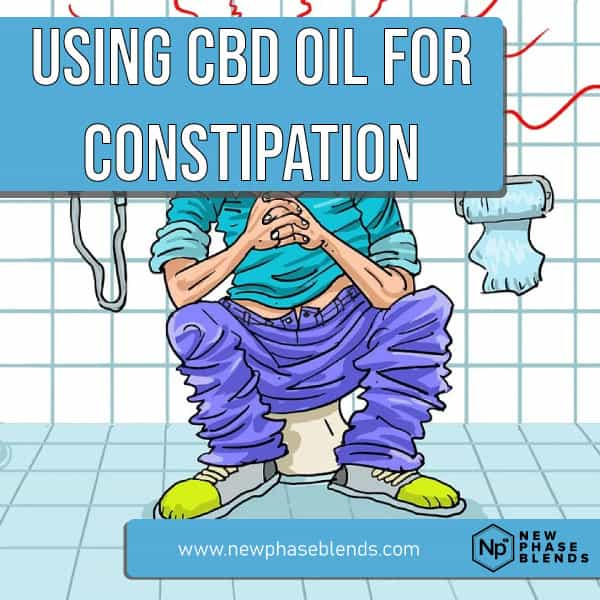Chronic pain affects an estimated 50 million American adults, significantly impacting their quality of life and daily functioning. While prescription medications remain a common treatment approach, they often come with concerning side effects and potential dependency issues. This growing concern has led many to explore natural alternatives such as CBD oil. Recent scientific evidence suggests CBD may offer effective relief for certain types of pain while presenting minimal side effects compared to traditional pain medications.
This comprehensive guide explores the science behind CBD oil for pain management, how to use it effectively, what research shows about its efficacy, and practical considerations for those considering this natural approach.
The Science Behind CBD’s Pain-Relieving Properties
How CBD Interacts with Your Body’s Pain Response Systems
CBD’s pain-relieving effects stem from its interaction with the body’s endocannabinoid system (ECS), a complex cell-signaling network that helps regulate vital functions including sleep, immune response, and pain perception. The ECS consists of endocannabinoids (naturally occurring cannabis-like molecules), receptors, and enzymes that break down endocannabinoids after they’ve carried out their function.
When you experience pain, multiple biological systems activate simultaneously. CBD appears to influence several of these pathways, which may explain its potential effectiveness for different pain types.

Key Mechanisms of CBD’s Pain Relief Effects
Research indicates CBD may help alleviate pain through multiple mechanisms:
- Anti-inflammatory action: CBD demonstrates significant anti-inflammatory properties by suppressing cytokine production and inhibiting inflammatory pathways. Inflammation is a primary driver of many chronic pain conditions, including arthritis, making this mechanism particularly relevant for inflammatory pain.
- Neurotransmitter modulation: CBD interacts with serotonin receptors (specifically 5-HT1A), which play a crucial role in pain perception and mood regulation. This interaction may help alter how pain signals are processed in the brain.
- TRPV1 receptor activation: CBD binds to transient receptor potential vanilloid 1 (TRPV1) receptors, also known as vanilloid receptors. These receptors detect and regulate body temperature and mediate pain sensations, particularly those triggered by heat or inflammatory conditions.
- Enhancing endocannabinoid activity: CBD may inhibit the enzymes that break down naturally occurring endocannabinoids, potentially enhancing their pain-relieving effects.
- Opioid receptor interaction: Some studies suggest CBD may influence opioid receptors indirectly, potentially enhancing pain relief when used alongside traditional pain medications without increasing dependency risks.
Practical Guide: Using CBD Oil for Pain Management
CBD Product Types and Delivery Methods
CBD products come in various forms, each with unique advantages for pain management:
- Sublingual oils and tinctures: Applied under the tongue, these products offer relatively quick absorption into the bloodstream (typically 15-30 minutes) and whole-body effects. This delivery method maintains higher bioavailability compared to oral consumption.
- Topical preparations: Creams, balms, and lotions infused with CBD work best for localized joint and muscle pain. They deliver relief directly to affected areas without entering the bloodstream in significant amounts.
- Oral products: Capsules and edibles must pass through the digestive system, resulting in delayed onset (30 minutes to 2 hours) but potentially longer-lasting effects. This option may be preferable for those seeking extended relief.
- Inhalation methods: Vaporized CBD provides the fastest relief (within minutes) but shorter duration of effects. This method bypasses the digestive system but raises potential respiratory concerns.
Potency Considerations and CBD Concentration
CBD oil potency typically ranges from 250mg to 3,000mg per bottle, reflecting the total cannabidiol content. When evaluating products:
- Start with lower potency: Beginners should consider products containing 250-500mg per 30ml bottle.
- Mid-range options: Moderate potency products (750-1,500mg per 30ml) work well for most users with average pain levels.
- High-potency formulations: Products exceeding 1,500mg per 30ml may be more suitable for severe or breakthrough pain.
Quality Indicators for CBD Products
When selecting CBD oil for pain management, look for these quality markers:
- Third-party testing: Reputable manufacturers provide certificates of analysis from independent laboratories verifying cannabinoid content and confirming the absence of pesticides, heavy metals, and microbiological contaminants.
- Extraction method: CO₂ extraction generally produces the purest CBD oil without harmful residual solvents.
- Hemp source: Products derived from organic, domestically grown hemp typically contain fewer environmental contaminants.
- Full ingredient disclosure: Quality products clearly list all ingredients, including carrier oils and any additional components.
- Transparent manufacturing practices: Companies should readily share information about their cultivation, extraction, and manufacturing processes.
For more information, check out our guide on how to choose quality CBD oil products.
Determining Your Optimal CBD Dosage for Pain Relief
Finding your ideal CBD dosage requires a personalized approach. Several factors influence how individuals respond to CBD, including:
- Body weight and metabolism
- Pain severity and type
- Individual endocannabinoid system functioning
- Concurrent medications
- Product concentration and formulation
Starting Dosage Guidelines
For CBD beginners approaching pain management:
- Begin with 5-10mg twice daily for mild pain or 15-20mg twice daily for moderate to severe pain.
- Maintain this dosage for one week while monitoring effects on pain levels and any potential side effects.
- Adjust incrementally by adding 5mg per dose if needed, allowing several days between adjustments to fully evaluate effects.
- Track your results using a pain journal to document dosage, timing, pain levels, and any side effects.
Research suggests that most chronic pain patients find relief in the range of 20-35mg of CBD per day, though some may require higher doses of 50-100mg daily. Always consult a healthcare provider experienced with cannabinoid therapy before beginning a CBD regimen, particularly if you take other medications.

The Emerging Research on CBD for Different Pain Types
Scientific investigation into CBD’s pain-relieving properties continues to evolve. Here’s what current research suggests about its effectiveness for various pain conditions:
Neuropathic Pain
A 2020 randomized controlled trial published in the Journal of Pain Research found that inhaled CBD (at low, medium, and high doses) significantly reduced pain intensity in patients with chronic neuropathic pain from conditions like Guillain-Barré syndrome compared to placebo. Participants reported meaningful improvements in quality of life measures and sleep quality.
Inflammatory Pain and Arthritis
Preclinical studies show promising results for CBD’s anti-inflammatory effects. A 2016 study in the European Journal of Pain found that topical CBD gel significantly reduced joint swelling and pain behaviors in rat models of arthritis without evident side effects. The researchers noted that the treatment appeared to prevent the development of further pain and nerve damage in affected joints.
Fibromyalgia and Widespread Pain
A 2019 observational study examined the effects of CBD-rich hemp extract in people with fibromyalgia. Participants reported an average 30% reduction in pain intensity after 8 weeks of treatment compared to baseline measures. Additionally, improvements in sleep quality and fatigue levels were noted.
Multiple Sclerosis-Related Pain
Research published in 2020 in the Multiple Sclerosis Journal indicated that a combination of CBD and THC oral spray helped reduce muscle spasticity, pain, and sleep disturbances in people with multiple sclerosis. Participants reported continued benefit with regular use over a 12-month follow-up period.
While these findings are promising, larger-scale human clinical trials with diverse patient populations are still needed to definitively establish CBD’s efficacy across different pain conditions. Most researchers emphasize that CBD appears to work best as part of a comprehensive pain management approach rather than as a standalone treatment.
Managing Expectations: Potential Side Effects and Considerations
CBD generally demonstrates a favorable safety profile with minimal side effects compared to many conventional pain medications. However, users should be aware of possible adverse effects:
Common Side Effects
- Dry mouth: CBD may temporarily reduce saliva production, causing mild to moderate dry mouth. Staying well-hydrated can help mitigate this effect.
- Drowsiness or fatigue: Some users experience mild sedation, particularly at higher doses. Consider timing CBD intake to avoid activities requiring alertness if this occurs.
- Gastrointestinal discomfort: Mild digestive issues including diarrhea or upset stomach may occur, often related to carrier oils rather than CBD itself. Taking CBD with food can help reduce these effects.
- Changes in appetite: Some users report temporary changes in appetite, though this effect varies considerably between individuals.
- Drug interactions: CBD can affect how your liver metabolizes certain medications by inhibiting cytochrome P450 enzymes. This could potentially alter the effectiveness of some drugs.
Special Considerations When Using CBD Oil For Pain
- Pregnancy and breastfeeding: Due to limited research, CBD is not recommended during pregnancy or while breastfeeding.
- Liver health: High doses of CBD may affect liver enzyme levels. Those with liver conditions should consult healthcare providers before use.
- Quality variation: The CBD market remains largely unregulated, with significant quality differences between products. Thorough research before purchasing is essential.
Integrating CBD Into a Comprehensive Pain Management Plan
For optimal results, consider CBD oil as one component of a holistic approach to pain management rather than a sole solution. An integrated strategy might include:
- Physical therapy and regular exercise tailored to your condition to improve mobility and strength
- Mind-body practices such as meditation, yoga, or tai chi to address the psychological aspects of chronic pain
- Anti-inflammatory nutrition focusing on whole foods rich in omega-3 fatty acids and antioxidants
- Stress management techniques to reduce tension that can exacerbate pain
- Adequate sleep hygiene to support natural recovery processes
- Appropriate medical care including regular monitoring by healthcare professionals
Legal Considerations For Managing Pain With CBD
The legal status of CBD products varies by location. In the United States, hemp-derived CBD containing less than 0.3% THC is federally legal under the 2018 Farm Bill, though state regulations may differ. When purchasing CBD products:
- Verify the product contains less than 0.3% THC to ensure legality
- Check your state’s specific regulations regarding CBD
- Be cautious when traveling with CBD products across state or international borders
- Keep certificates of analysis accessible if questioned about CBD products
Conclusion: Is CBD Oil Right for Your Pain Management?
The growing body of research surrounding CBD for pain management shows promise, particularly for those seeking alternatives to traditional pain medications with fewer side effects and lower dependency risk. However, CBD is not a miracle cure, and results vary significantly between individuals and different pain conditions.
Before incorporating CBD oil into your pain management regimen:
- Consult with healthcare providers knowledgeable about cannabinoid therapies
- Research product quality thoroughly before purchasing
- Start with conservative dosing and adjust gradually
- Monitor your response systematically
- Maintain realistic expectations about pain relief potential
- Consider CBD as complementary to other evidence-based pain management strategies
With a thoughtful, informed approach, CBD oil may offer a valuable addition to your pain management toolkit, potentially improving quality of life and functional capacity while minimizing reliance on medications with more concerning side effect profiles.





















